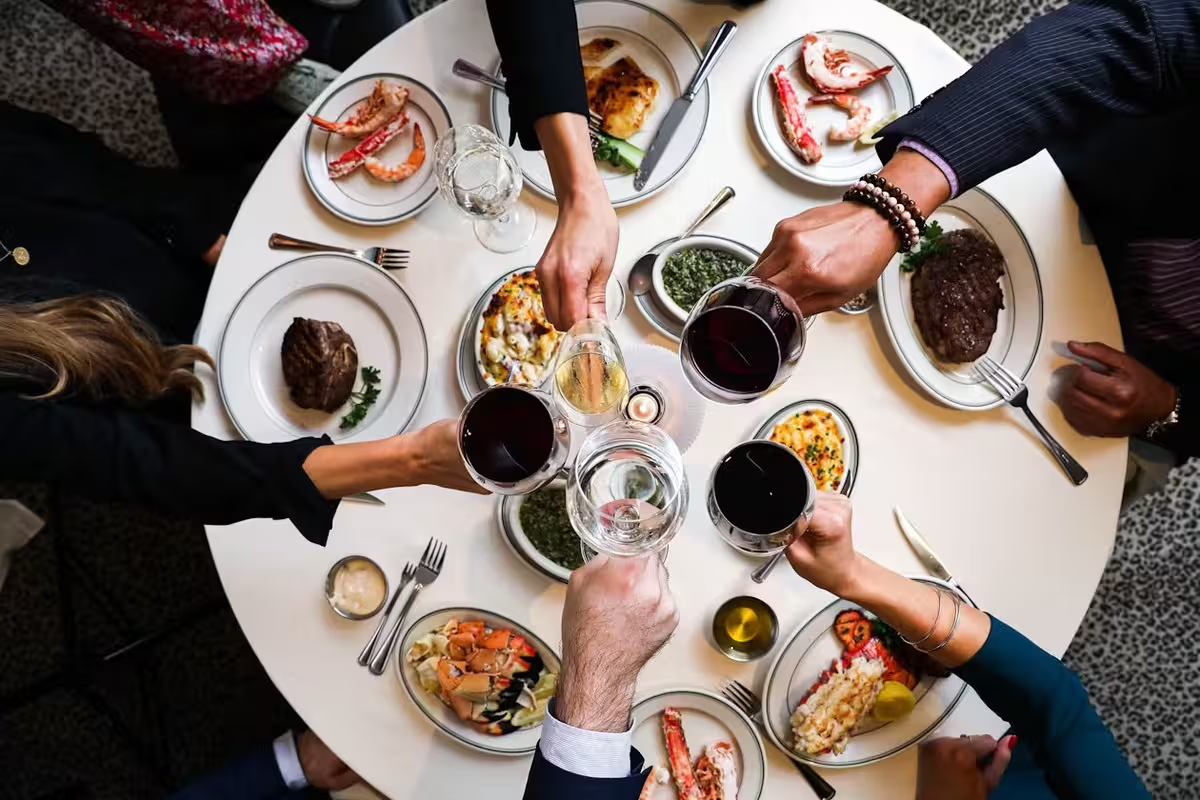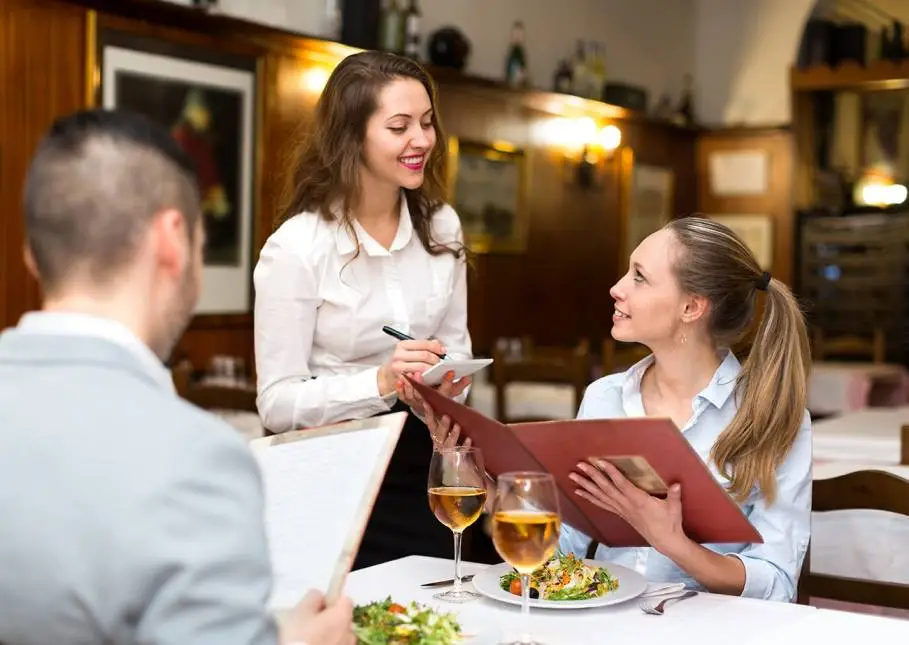Serve From The Left Clear From The Right to act with proper behavior. Every subcategories of the art have explicit silver service etiquette rules. This tutorial seeks to teach you the foundations of silver service etiquette.
Key Takeaways
- A Guide to Classic and Modern Bloody Mary Garnishes
- Hen Party Liverpool: Planning Your Hen Party in Liverpool
- Cocktails With Orange Peel Garnishes NYT: The Role of Orange Peel
- Know More About Green Tinted Cocktails NYT Crossword Clue
Serve From The Left Clear From The Right

History of Silver Service Courtesy
For hundreds of years, silver service has been in use. But unless you have worked in affluent homes, been in top-notch hotels or dined at upscale restaurants. You might not have come across silver service eating. Upper-class British people have traditionally valued and praised silver service. And this is now the benchmark for dining all throughout the world.
Silver service comes from the 17th and 18th century. The usual wait crew at a private house would take Monday off. The butler would thus be requested to intervene to feed the family. From his platter, the butler would stroll around the table delivering family or guest meals straight onto their plates. We call this particular service style "silver service." And it gained great appeal in modern-day five-star hotels and high-end restaurants. Those who want to work in luxury residences, five-star hotels, high-end restaurants, chalets and boats need silver service abilities. Knowing silver serving etiquette is therefore absolutely essential.
Silver Service Etiquette: The Foundations
A left side method of food service is silver service. In France, this service is called "service à l'Anglais," or English service. Served first is the guest visiting the host or principal. Since they usually are the most frequent visitors of the principal. Service proceeds in a circle so staff members avoid running into other servers. Glasses and plates are wiped from the right. And glasses are placed diagonally to the right. With water glasses in front and wine presented according to course.
For a right-handed waiter, silver service usually comes more naturally. You flank the guest to their left side. With your left hand holding and supporting the silverware, serve the food with your right hand. This method calls a lot of dexterity and practice. You should practice whenever you can to maintain these abilities current. Particularly if your regular responsibilities do not include active serving.
Silver Service Courtesy: Drinks, Courses, and Service
- Plates come from the left and are cleared from the right side. The visitors thus feel less enclosed. Slides in a fresh plate with your left hand; clear a used plate with your right hand. The only exception to this is if the guest is physically obstructing the route (say by leaning) or if there is an object on the right side, such a sherry glass. In this situation just remove plates from the left side; avoid leaning across the guest.
- Since visitors will have different tastes in the beverages they drink, water and wine glasses should stay on the table all through the dinner. One removes just the sherry glass. Of course, you should remove other glasses requested by guests if they so ask. Change the wine glass always when a guest requests a different kind of wine.
- Depending on the course count, formal meals could run four to five hours.
- Usually the main entrée at a formal supper is roast beef, fowl or game. Platter presentation of this is common. And is usually show to the host for inspection. They will show whether they are delighted with the start of services. Platters from a hotel or restaurant are not presented to the host as the maitre'd will complete the inspection before meal service starts.
- Should service call for wet veggies, the dish will feature a napkin at the base to help absorb extra liquids.
Pudding and clearing Silver Service Etiquette
- Present glaceed fruits in compotes, sweet, chocolates. Then arranged on the table as accent piece. Sometimes if there are long laps between courses visitors might enjoy helping themselves.
- You have to keep noise under control as you clear the table. Never therefore stack multiple plates or clear on a tray. Take every plate separately to the kitchen. You might carry the plate to a sideboard at big dinners. Another server will then forward them to the kitchen.
- Everything on the table unrelated to the final courses needs to be cleared before pudding. Work down to the smallest from the biggest item first. A little doily-lined tray can help you to hasten this process. This will cut noise and stop slippage.
- Before pudding, freshening up depends on breaking down the table. To the left of every guest stand yourself. Then, held just below the edge of the table, brush the crumbs onto a tiny plate or tray using a thin brush or folded napkin.
- Serving customers in a restaurant is mostly about ensuring their experience makes them delighted. Diners pay for fantastic meals as well as for first-rate service. It is known as the hospitality sector, after all.
- Particularly in formal dining rooms, the restaurant experience revolves mostly on the act of serving food. Providing first-rate customer service will help you wow your visitors and collect gratuities right along.
Here on this site, we have a lot of ideas you might apply to provide the greatest service possible at your place of employment.
Styles of service
Regarding the dining experience, different restaurants follow different approaches. From lavish five-star restaurants to counter-serve from the left or right, there are countless ways to welcome guests.
Most restaurants will typically apply one of these service models:
Popularized by fast-food restaurants and other outlets, quick service is all about speed and convenience. After placing their order, a guest waits a few minutes at the counter and walks off with their lunch. While some fast service restaurants provide a dining room, not all.
Like quick service, a fast-casual restaurant may often take orders at the counter yet provide a dining room. Usually, guests have a table marker so the kitchen crew may bring the meal. Diners are occasionally handed buzzers to signal when their meal is ready at the counter.
Many restaurants follow a casual dining model, which emphasizes excellent cuisine together with a reasonable price and a nice time. A host will usually seat guests; a server will handle their dinner orders. The serve from left or right will then bring the food and routinely follow up with the patrons to make sure they are happy.
Fine dining: Offering first-rate service in a high-class setting, fine dining restaurants represent the most sophisticated level of operation. Excellent hospitality, sophisticated décor, and special menus of carefully crafted, professionally produced dishes define the client experience.
Our advice will mostly address food service in fine dining and casual dining establishments. We will also suppose you have already sent the visitor their orders to the kitchen after seating them.
Gathering the meals from the kitchen
Kitchens are noisy, packed spaces. Every great chef occasionally makes blunders. First impressions count, hence before leaving the kitchen you want to make sure the orders are precise. Should a mistake be made by the back of house workers, it would negatively affect the whole restaurant including you.
Get used to routinely consulting this checklist:
- Every dinner is for the right table.
- All orders—including any substitutions—are accurate.
- Bowls and plates are defect-free.
- Add further cutlery including soup spoons and steak knives.
- Present sauces or butter on the side.
These little actions improve customer service and help you avoid returning food to the kitchen or comping meals.
Wine serving
While drinking wine is an art form in and itself, wine is a preferred beverage matched with meals. Without the correct technique, you can overfill a glass or unintentionally pour it on a guest.
These guidelines will help you serve wine:
Compile your materials: Bring your corkscrew, a wine glass for every guest, and the wine bottle. Remember certain chilly wines call for an ice bucket.
Present the wine: As usual, be sure to show the wine bottle so the consumer may validate their decision. You will want to show the label on the bottle and state the name, vintage, and any other pertinent information orally. Only once they confirm should you open the bottle.
Give a sample. The judge will be the visitor that requested the wine. Open the bottle, then show this person the cork. Then drizzle a small bit so the guest may taste the wine and swirl it in their glass. You start pouring for the table once approved.
Some broad guidelines for providing
- Never touch a guest; try your best not to run across them, particularly while arranging food. Should you spill something, avoid trying to clean it off the guest.
- Never touch yourself. Looks count, hence try not to touch your face or any other body part. Should you have to clean your hands, reach for a napkin or apron.
- Use open hand service; you never should cross a visitor at a perpendicular angle or reach over them. Serve instead from the left or right using the same hand. Should you be serving from the left, utilize your left hand. Serving from the right, utilize your right hand.
- Present cuisine together. Bring desserts, entrees, and appetisers simultaneously. It's reasonable to inquire whether certain guests prefer an appetizer as a meal first or with everyone else's food.
- Never touch the rim of a glass; carry all cups well below the top. This tells visitors that their glassware is clean and helps stop the transmission of germs. With wine glasses, just grasp the stem.
FAQs: Serve From The Left Clear From The Right

Do you serve and clear from the right or left?
Here in America, the general guideline is to "serve on the left!" The left side of the guests receives plates and other serving dishes. From the guest side of the table, plates are cleared. you need to know Serve From The Left Clear From The Right.
Do you serve drinks from the left or right?
From which side should you present? Most American services start pre-plated courses from the right and clear them from the right. Glasses are found to the right of the guest, hence beverages are poured there as well. Other forms of service, such Russian service, demand that the guest be served to the left.
Which side does a waiter clear from?
You will always want to clear from the right side no matter how you present the dish. Like way you pour wine, pick up all the last plates by walking counterwise. In fine dining restaurants, you desire not to stack dishes on one another.
Why do we serve food from the left side?
Food would be scooped from a bowl or plate by the server onto each person's plate. Given the logistics of accomplishing this, serving meals from the left made sense. Serving from the left was the least invasive approach of delivering food since most customers are right-handed.




